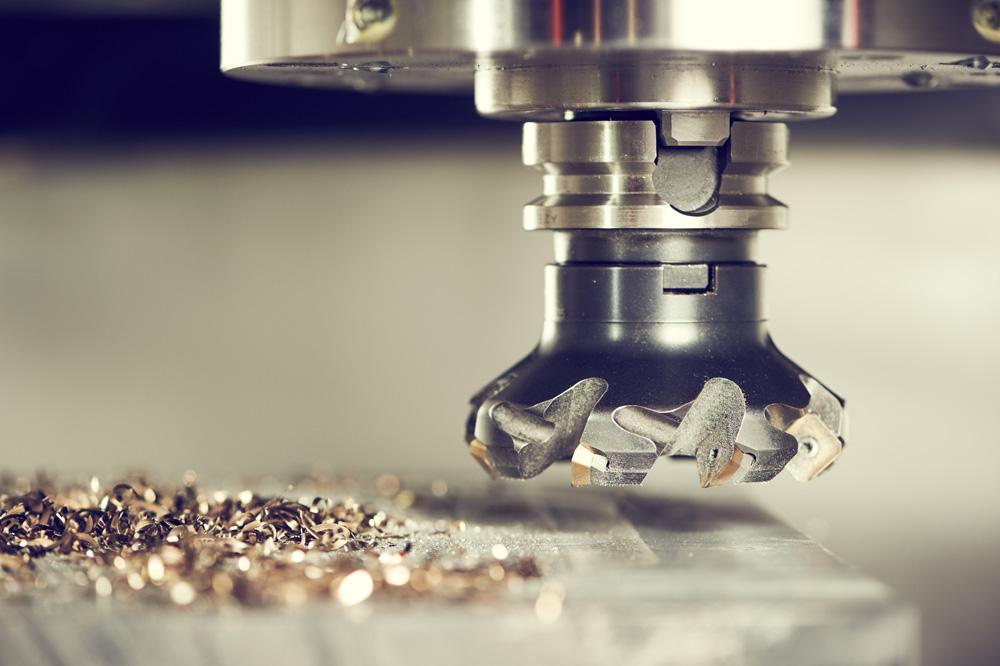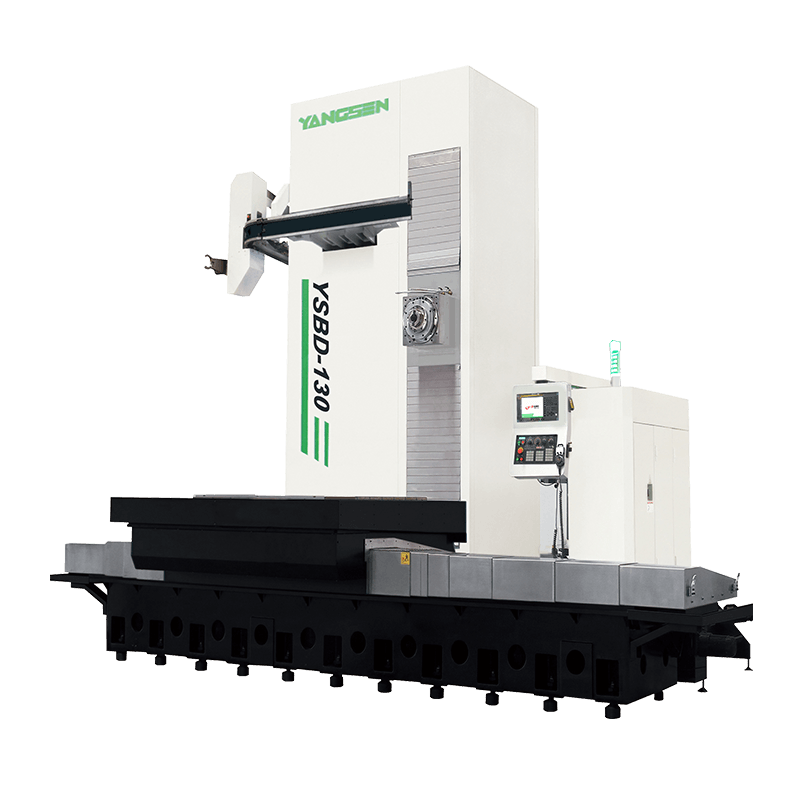Maintaining a competitive edge in the industrial and manufacturing industries depends mostly on accuracy and efficiency. Machinery has developed throughout the years to satisfy the always-rising needs of sectors. Among these machines, the Horizontal drill mill is one of the most important ones utilized for a range of jobs needing great accuracy.
If you engage in large-scale manufacturing or metalworking, you have probably heard of or used a horizontal mill or boring machine. What precisely, though, are these machinery benefits?
We will discuss in this article the reasons why many businesses find the horizontal boring mill to be absolutely essential. We will also underline the particular benefits that define this machine as a preferred choice above other kinds of machining tools.

What Is A Horizontal Boring Mill, And How Does It Work?
One must first grasp the basic structure and purpose of a Machining Center if one is to really value its advantages. Designed to drill exact holes and enlarge current ones on big, heavy, or unmanageable workpieces, a horizontal boring mill—also known as a horizontal boring machine—is a piece of technology. Whereas the spindle in vertical mills is vertical, the Machining center has a spindle positioned horizontally, providing particular benefits in some kinds of operations.
Usually comprising a big worktable supporting the workpiece and a spindle moving horizontally to execute drilling, milling, and boring operations, Horizontal boring tools Larger workpieces—which may be challenging to move about or mount onto other kinds of equipment—make these machines especially helpful.
Still, why are these machines so extensively applied? Apart from various milling or drilling choices, what distinguishes them?
Why Is a Horizontal Boring Machine Essential for Large Workpieces?
The ability of the Machining Center to handle big, heavy, and irregularly shaped workpieces is one of its most important advantages. This machine shines in cases when the weight and bulk of the material render other equipment unworkable.
The following are some main factors explaining why the Boring equipment is a first choice for big projects:
-
Increased Stability: Horizontal boring tools give great stability since the workpiece stays motionless while the spindle travels. They are, therefore, perfect for handling huge things like industrial machinery components, engine blocks, or big steel plates.
-
Reduced Setup Time: When it comes to placing and clamping large workpieces, Horizontal boring tools call for fewer adjustments than vertical mills. Once the item is firmly on the worktable, the machine may run a variety of processes without requiring repositioning, therefore lowering total setup time and increasing productivity.
-
Improved Precision: Achieving exact outcomes is absolutely important while working on big sections. Because of its strong construction, which lets tight tolerances even on large metal or other material pieces, the horizontal mill offers better accuracy.
For sectors such as aerospace, automotive, and heavy equipment manufacturing that routinely deal with large-scale components, these characteristics make the Boring equipment the perfect answer.
How Does a Horizontal Mill Improve Efficiency in Operations?
One of the main causes manufacturers use a Machining center is efficiency. Machines that provide flexibility and speed without sacrificing quality are much sought after as businesses drive for faster manufacturing times and more affordable alternatives—many important benefits from a horizontal mill help to increase operational effectiveness.
-
Multiple Operations in One Setup: The capacity of Boring equipment to execute many machining operations in one setup is one of its best qualities. The horizontal mill may manage drilling, milling, and boring, as well as other tasks. Faster production cycles arise from operators spending less time transporting workpieces between several machines.
-
Larger Work Envelopes: Usually having more work envelopes than vertical mills, horizontal mills allow one to operate on bigger components in fewer sets. This capacity is especially crucial in sectors where production volume and efficiency define their success.
-
Enhanced Automation: Advanced CNC (computer numerical control) systems found in many current Horizontal boring tools can automate several operations, therefore lowering the requirement for human involvement. Automation lets businesses lower the risk of human error while raising capacity.
How Might A Horizontal Boring Mill Increase Versatility?
The versatility of Boring equipment is one of its most appealing qualities. Investing in equipment capable of a broad spectrum of operations is essential at a time when businesses have to adjust to always-shifting production needs.
Using the same machine, a Machining center allows you to execute all three of these fundamental operations—drilling, boring, and milling. This offers a great benefit over specialized devices for only one purpose:
-
Project scope's flexible character
-
Less demand for some tools
-
Simplified procedures for items needing several operations
-
Thread Cutting and Tapping:
Industries, including the manufacturing of heavy machinery and automobiles, depend on precision-drilled holes quite often. Thanks to their robust construction and adaptable tooling features, Boring pieces of equipment can easily manage these threading and tapping operations.
Beyond drilling and boring, Horizontal boring tools are also adept at facing vast surfaces or contouring items with complex geometries. For sectors like aerospace, where every component must satisfy strict specifications for safety and performance, this is perfect for those needing exact, flat surfaces.
These machines can reach sections of a part that would be difficult with a vertical mill thanks to the spindle's horizontal orientation. This adaptability lets one create intricate shapes and interior voids, especially in:
-
Engine blanks
-
Transmission houses
-
Huge pump bodies
Because the Machining Center is so flexible and can be used for a wide range of jobs, both big and small projects can benefit from this very reasonably priced option.
What Role Does Technology Play in Modern Horizontal Boring Mills?

Modern Horizontal boring tools' advanced technological integration has transformed production processes. Sophisticated features in today's machines allow them to operate at even more precise and efficient levels.
-
CNC Integration: CNC technology, which lets many Boring equipments operate extremely precisely and repeatably, is currently common in this equipment. Complex programs can be stored in CNC systems, allowing the machine to run sophisticated machining jobs with little human involvement. This increases precision as well as speeds up manufacturing times. Advantages include:
-
Capacity to exactly copy difficult designs
-
less demand for hand calculations or corrections
-
higher output brought about by automated procedures
-
Improved Spindle Design: Improved spindle designs of the most recent horizontal mills provide more speed, power, and versatility. High-speed rotation of these spindles lets one cut faster while preserving accuracy. When working with hard materials or during fast operations, in particular, this is quite helpful. This is especially helpful while working with:
-
Hard-to-machine components, including titanium or Inconel
-
High-volume manufacturing runs when speed is absolutely vital.
-
Smart Controls and Touchscreen Interfaces: Modern Horizontal boring tools are easy to run because of touchscreen interfaces and simple control features. This lowers operator training time and raises the machine's general efficiency. Remote monitoring systems and touchscreen controllers let operators:
-
Run several machines at once.
-
Track current machine performance.
-
From a safe distance, make corrections to lessen the need for human intervention.
Thanks to technology-driven improvements, today's Horizontal boring apparatus is more powerful and user-friendly, allowing companies to reach higher degrees of production while keeping quality.
In What Ways May A Horizontal Boring Machine Enhance Ergonomics And Safety?
Any manufacturing environment depends critically on safety. Hence, Horizontal boring apparatus provides many advantages in this respect.
-
Reduced Handling of Workpieces: Large workpieces are securely fixed on the worktable of the machine, so operators' handling of them is less necessary. This lowers the possibility of lifting or moving big objects, causing injuries.
-
Remote Monitoring and Control: Often equipped with CNC, Heavy-duty horizontal mill let for remote monitoring and control. By monitoring the machine's performance from a distance, operators can help minimize the requirement for continuous hand involvement. This enhances safety as well as reduces the possibility of mishaps brought on by human mistakes.
-
Ergonomically Designed Workstations: Usually, operator comfort is considered in the design of Horizontal boring apparatus. Easy access to necessary components and changeable controls guarantee that operators can work effectively without taxing themselves. This emphasis on ergonomics helps to lower the risk of repetitive strain injuries and tiredness.
-
Fail-Safe Systems: Fail-safe systems included in modern Horizontal milling machines allow them to automatically stop in the event of overheating, tool breakdown, or other problems. This not only safeguards the equipment but also keeps operators free from possible risks.
Including a piece of Boring equipment in your manufacturing plant will help to create a safer and more comfortable workplace, thereby benefiting your workers as well as your profitability.
Can horizontal boring mills boost profitability and help lower expenses?
Financial factors usually dictate whether or not to buy a Horizontal boring apparatus. Many manufacturers would be wise to invest in these types of equipment since, fortunately, they provide major cost-saving advantages.
-
Reduced Labor Costs: Heavy-duty horizontal mills assist save labour expenses since they can run several operations in one configuration and demand less manual involvement. Fewer setups free operators to concentrate on other chores since they mean less time spent getting items ready.
-
Lower tooling costs: Usually speaking, horizontal mills require less specialized tools than vertical mills or other kinds of machinery. Over time, this results in reduced tooling costs since you won't have to buy as many different tools for different procedures.
-
Decreased Material Waste: High degrees of accuracy of Horizontal boring apparatus are well-known. Tightening tolerances and lowering mistakes will help producers cut material waste. This lowers the need for rework, boosting profitability even while it saves money on raw supplies.
-
Enhanced Energy Efficiency: Energy economy is considered in the design of modern Horizontal boring apparatus. These machines can greatly lower running costs by optimizing motor power and cutting the number of setups and operations, therefore saving energy.
These financial gains make it quite evident that Heavy-duty horizontal mills might improve the bottom line of your business.
Different kinds of Horizontal drill mills:
One should realize from thinking about Boring equipment that every machine is unique. Each of the several horizontal boring mills has special capabilities, characteristics, and uses; they serve diverse machining needs.
Whether you work in precision machining or heavy industrial, there probably is a Heavy-duty horizontal mill that fits your needs. Let us examine the several kinds of Horizontal drill mills and their particular applications.
-
Table Type Horizontal Boring Mill
The most often used and flexible kind of Heavy-duty horizontal mill is the table-type Horizontal drill mill. Under this arrangement, the spindle moves longitudinally along the Z-axis while the workpiece is secured onto a table that moves in both the X (horizontal) and Y (vertical) axes. Mounted on a column, the spindle and the tool head enable the user to execute several highly precise drilling, milling, and boring operations.
-
Floor Type Horizontal drill mill
Designed for milling very large and heavy workpieces that cannot be readily mounted on a table, the floor-type Boring equipment this kind of machine mounts the workpiece on the floor instead of a stationary table, and the boring spindle on a column that can slide along rails. The machine head can machine several sides of big components in one setup by moving both horizontally and vertically.
-
Planer Type Horizontal drill mill
Though it has a special feature—a planer mechanism integrated into the machine—a planer type Boring equipment is comparable to a floor type; under this arrangement, the machine's planer moves over the stationary workpiece rapidly and effectively, cutting vast regions. Large-scale, heavy-duty machining operations requiring the removal of considerable volumes of material from the workpiece are quite suited for this equipment.
Conclusion:
All things considered, the horizontal boring mill is a vital instrument in contemporary manufacturing because of its several advantages. From easily handling big workpieces to providing outstanding precision and adaptability, these machines provide major benefits over other forms of milling and boring tools. Modern horizontal boring machines are more powerful, efficient, and user-friendly than they were years ago, thanks to technological developments.
Investing in a horizontal boring mill can be the secret to reaching your company objectives whether your main aims are ones of efficiency, cost control, or manufacturing capacity increase. The function of horizontal boring machines will only become more important as sectors change and demand more degrees of accuracy and productivity drive.
To learn more about innovative solutions and high-quality horizontal boring machine, visit our website at https://www.cncyangsen.com/. Discover how our advanced machinery can elevate your manufacturing processes to new levels of efficiency and precision. At Yangsen, we are committed to providing the tools necessary for your business to thrive in the competitive landscape of modern manufacturing. Don't just take our word for it—explore our site to see the full range of our capabilities and get in touch with us to discuss how we can partner for your next project.



